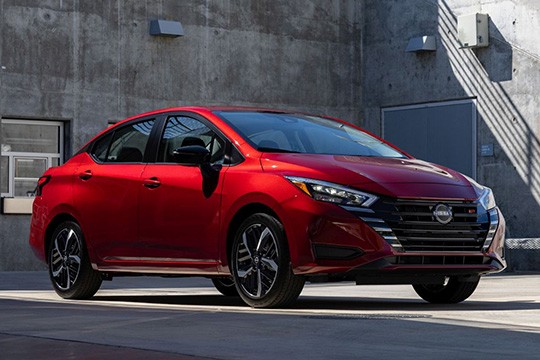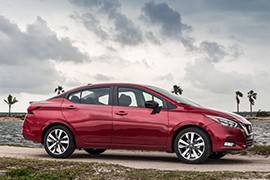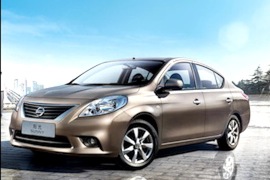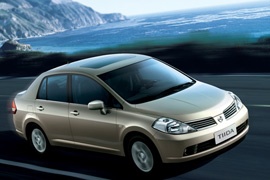NISSAN Tiida / Versa Sedan Models/Series Timeline, Specifications & Photos
First production year: 2006
Engines: Gasoline, Diesel
The Japanese automaker introduced the third generation of the Versa in 2018, and sales started well, but then, in 2020, when the pandemic situation shut down the industry, it went through difficult times.
Yet, Nissan didn't collapse and continued producing the Versa, which proved to be a very effective solution in the affordable car market. That made it a top seller in its class, and Nissan tried to keep the momentum. So, after four years on the market, it was time for an upgrade.
For the 2022 model year, the Versa came fitted with more standard options and an improved front fascia. While the S-trim level, the lowest, was still difficult to differentiate from its predecessor, the higher grades were easier to identify. Starting with the second grade, the car sported 16", two-tone, alloy wheels with an option for a set of 17". At the same time, the top-shelf version SR received chromed trims on the outer sides of its four-slat grille.
Inside, Nissan improved its features. Even the S trim level got a standard 7" touchscreen display atop the center stack. As an option, the automaker offered Apple CarPlay and Android Auto, starting with the S-Plus grade. Another essential upgrade was on the safety side, where all vehicles received better systems, such as Automatic Emergency Braking and Lane Departure Warning. The list continued for higher grades with Blind Spot Monitor and Rear Cross Traffic Alert. The 60/40 split-folding rear bench was standard on the entire lineup but the S-grade.
Yet, there were no changes under the hood, where Nissan relied on the same 122 hp (124 PS) 1.6-liter gasoline engine paired with a five-speed manual for the S trim level or a CVT for the rest of the range.
The Nissan Tiida/Versa died in Europe, but thrives on other markets. The newest generation was launched in 2019 with the help of country music star Kane Brown. But things look better in the U.S. for the compact-sized Nissan than they looked din Europe.
The new generation has a completely redesigned front area, with the same motifs found on the rest of the Nissan family. The manufacturer made an important step challenging its customers both with a bold exterior look and a big technological package inside the cabin, depending on the trim level.
As before, the Versa has plenty of room inside and the new generation keeps the same spirit, even if the roofline and the A-pillars are more angled than before. The same design key-factors can be found on the bigger Nissan sedans such as the Altima and the Maxima.
The Versa has only one engine available, a 1.6-liter 4-cylinder engine with 122 HP. As standard, on the base trim level, the Versa is offered with a manual 5-speed transmission. On upper-scale versions though, Nissan offers the enhanced new X-Tronic CVT gearbox. Also, depending on the trim level, Versa can have a better infotainment system, keyless-entry, push-button start and heated front seats. Automatic climate control, Apple CarPlay and Android Auto are also offered as options.
After struggling to have better sales for the first Tiida/Versa generation, launched during the world economic crisis, Nissan has decided to launch a second-generation for its small class sedan in 2011 as a 2012 model year. Compared to the first generation, it received a curvier bodywork and more efficient engines.
The interior is very spacious despite the small exterior dimensions. The second generation of the Tiida was based on Nissan Sunny platform, instead of a Renault-Nissan Alliance common platform. The option offering was slim, with some light-alloy wheels, automatic climate control, central locking, on-board computer, and power windows. The power-steering was electro-hydraulically assisted.
With 505 liters (17.8 cu-ft) of luggage space even with the seats up, the sedan has a very big trunk, but the rear seats were foldable only on the higher trim levels.
It was available with one engine option, 1.6-liter gasoline naturally aspirated unit, which developed 106 hp. It was mated as standard with a 5-speed manual or, as an option, with a CVT (continuously variable transmission).
From the performance point of view, the Versa was slower than most of its class competitors but still was able to pay a good impression in town. The short overall length of 4.45 m (14.6 ft) helped the Versa to be nimble in cities and good in finding parking spots.
Nissan introduced the Tiida/Versa in Japan in 2004 and sent it abroad in Europe and the North American continent in 2007 and 2008, respectively.
The compact vehicle was based on the Renault-Nissan B-platform, which was used by the French automaker for the Megane. Thanks to this, it scored high grades in the EuroNCAP crash-test program. But, unfortunately, it was priced too high for the world financial crisis that struck the automotive industry in 2008. It sported the Tiida nameplate in Europe, while Americans knew it as the Versa, and it was available either as a five-door hatchback or a four-door sedan.
Sporting a design that was far from being the most inspired one imagined by the Japanese automaker. The Versa featured small, vertical headlights and a three-slat grille with chromed surroundings, depending on the trim level. While the five-door version didn't look that bad, the sedan featured a bulky rear end and a tall deck. Finally, at the back, the taillights flanked the trunk's opening and were stretched over the quarter panels.
Inside, the Tiida was very simple on the base trim level. The air-conditioning was fitted as standard from the second level. The dashboard design was not that simple and clean anymore. The center stack, particularly, was crowded with a storage compartment on the upper side, audio controls, and climate unit. The three-round, binocular-style instrument cluster offered the basic info for the driver. At the front, the high-mounted seats were comfortable, while at the back, the wide benchseat was adequate for three adult passengers.
The Tiida/Versa was a replacement for both Nissan Sunny and Pulsar. It was fitted with engines ranging between 108 hp and 112 hp. The latter was a 1.8-liter gasoline powerplant with variable valve-timing system built for fuel efficiency. A diesel engine was on available for the specific markets.



